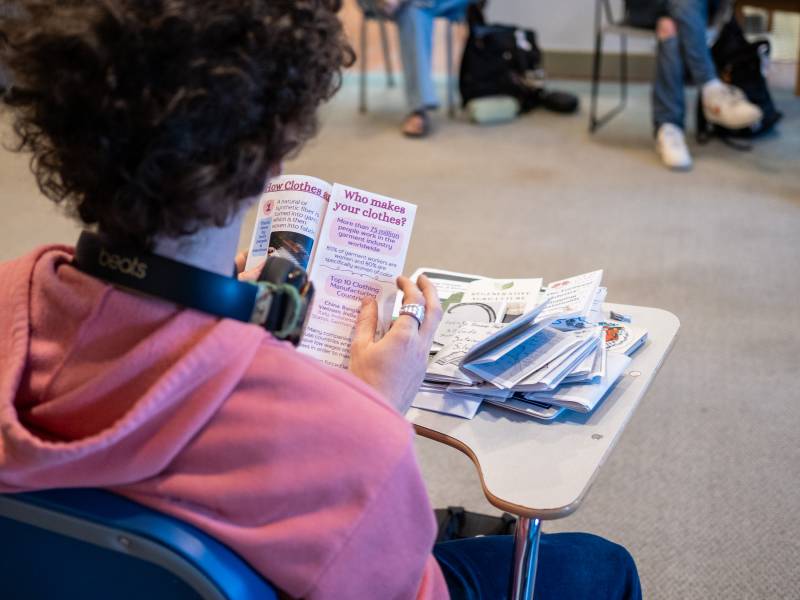“The scale of the challenges we face demands that all people have baseline understanding” of climate, the plan says. “[H]igher education must advance a learning agenda…with cross-disciplinary educational offerings.”
In a 2022 global survey, 60% of higher education institutions said that climate-related content is found in fewer than 10% of their courses. But a vanguard of colleges and universities are looking to change that. Each of these diverse institutions has their own unique method and mission. They are all taking the strategy of integrating sustainability content as widely across the curriculum as is feasible. They are breaking out of traditional silos and disciplines, and ensuring that these courses are encountered by as many students as possible.
Toddi Steelman, former Stanback Dean of the Nicholas School of the Environment at Duke, was a member of the Aspen Institute’s This Is Planet Ed Higher Ed Task Force. Duke introduced a wide-ranging climate commitment in 2022 that spans operations, research grants and partnerships, including with the New York Climate Exchange.
But “education is our superpower,” Steelman said. “We want every major to be a climate major. Our responsibility is to ensure we have educated our students to capably deal with these challenges and identify the solutions. Whatever they do – preachers, teachers, nurses, engineers, legislators – if they have some sort of background in climate and sustainability, they will carry that into their first job and the next job.”
Accordingly, each of the ten schools within the university is working to define for itself what it means to be aligned with what Duke calls a “fluency framework.” The framework spans skills, behaviors and attitudes that uphold climate and sustainability understanding.
Allowing each school to find its own way, rather than mandating a shift to climate content by fiat, will take time. Steelman is advocating for fluency for all undergraduates by 2028, she said, but “We’re working through a committee process and we’ll see what sticks.”
The hope is that this process, honoring faculty expertise, results in more ownership and more meaningful integration of climate content. Steelman says the schools of nursing and medicine have been out in front, along with, fascinatingly, the French department.
“They are introducing climate change issues into conversational French,” she said. “They are also thinking about research about how you conjugate verbs. The way you talk and think about the future has consequences for climate change.”
SUNY College of Environmental Science and Forestry in Syracuse was ranked number one in the nation (along with two other schools) for its sustainability curriculum in 2023. So it’s perhaps surprising that it doesn’t have a single course that focuses solely on climate change. At least not yet.
“We don’t necessarily teach specifically about climate change, at least at the introductory level,” said Stephen Shaw, the chair of the Environmental Resources Engineering department.
“We definitely teach the fundamentals that let people understand the science of it, and what it means to do climate adaptation, and mitigation,” he added. Students can even work with one professor to directly build instruments that measure greenhouse gases in the field.
The faculty, said Shaw, is now debating adding an interdisciplinary, introductory course that answers questions like: “What is the basic science? What are the impacts? What are the impacts to people? What are the impacts to habitat, recreation, all across the board?”
Dickinson, a liberal arts college of just over 2,000 students in Pennsylvania coal country, mandated in 2019 that every student take at least one sustainability course as a requirement for graduation. In practice, said Neil Leary, Dickinson’s associate provost and director of the Center for Sustainability Education, “over 50% of students who graduated this past May had taken four or more such courses, and one in four had taken more than six.”
Dickinson offers more than 100 sustainability courses per semester, in departments from business to architecture. The college’s “Mosaic” courses, offered once or twice a year, are of particular interest. They are co-taught by professors in different disciplines and often include an independent study and a travel component. In a recent offering, on the energy transition in Germany, students studied representations of the environment in German literature and culture, and also traveled to Germany to see its adoption of solar and energy efficiency in practice.
Like Duke with its fluency framework, Dickinson follows a broad definition of sustainability, Leary says. He cites the Global Council for Science and the Environment, a nonpartisan nonprofit dedicated to advancing environmental and sustainability education and research, which has identified five key competencies in the field: Systems thinking, future-thinking, collaboration skills, strategic thinking and values-thinking.
“This is not value-neutral education,” Leary said. “Sustainability has a set of values that includes taking all people’s needs into account.”
For now, institutions that go all-in on sustainability are rare enough that it can serve as a selling point in the competition for students, faculty and donors. Leary says 40% of undergraduates Dickinson surveyed recently agreed that this was a major factor that brought them to the college.
But if leaders in the sector have their way, an all-sustainable curriculum will shift from a nice-to-have to table stakes. Bryan Alexander, author of Universities on Fire and an educational futurist with a particular focus on climate change, said, “My slogan is, climate change is the new liberal arts.”




